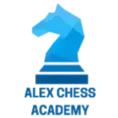Strong visualization skills can help you anticipate threats, plan deeper strategies, and avoid costly mistakes. Like any skill, it improves with consistent practice. Let’s explore techniques to enhance your board vision and bring your chess game to the next level.
1. Start Small: Memorizing Piece Placement
Begin by practicing the basics. Set up a random position on the board and study it for a minute or two. Then, close your eyes or cover the board and try to recall where each piece is placed and which squares are empty.
To take it further, imagine potential moves from these positions. For instance, if a knight is on d5, visualize all the squares it can jump to. At first, this might feel difficult, but with repetition, it will become second nature.
2. Blindfold Chess: The Ultimate Visualization Test
Blindfold chess—playing without looking at the board—is an advanced but highly effective way to train visualization. Start with simplified versions:
Play against yourself by calling out moves without using a physical board.
Have a partner relay moves while you visualize the evolving position in your mind.
As you improve, try playing short blindfold games. This technique forces you to actively picture the board and think several moves ahead, honing your mental clarity.
3. Solve Chess Puzzles Mentally
Chess puzzles are perfect for building board vision. When tackling a puzzle:
Look at the position briefly, then cover the board and solve it in your mind.
Visualize the solution step by step before making any physical moves.
Online platforms like Chess.com and Lichess offer a range of puzzles that can help develop this skill. Start with easy problems, gradually increasing difficulty as your visualization strengthens.
4. Replay Games from Memory
Replaying games in your mind is another powerful exercise. Choose a famous game or one of your own, and go through the moves mentally. If recalling an entire game feels overwhelming, begin with just a few moves and build up gradually.
This practice helps solidify your ability to track positions, plan sequences, and understand the flow of a game—all crucial for improving board vision.
5. Use Notation to Build Mental Imagery
Descriptive chess notation is a valuable tool for visualization. As you read through moves (e.g., 1. e4 e5 2. Nf3 Nc6), close your eyes and picture the position. Avoid looking at a physical board to force your mind to create the images.
For an extra challenge, have someone read the moves aloud while you imagine the game. This not only sharpens your visualization but also improves your ability to process moves quickly.
6. Set Custom Visualization Challenges
Create fun challenges to push your skills further:
Imagine a pawn structure: Visualize all pawns starting on the third rank, then add pieces one by one.
Reconstruct tactical patterns: Picture common motifs like a knight fork or a queen and rook battery without a board.
Visualize multi-move sequences: Think through a series of moves, such as e4, c5, Nf3, d6, d4, cxd4, and mentally picture the position after the sequence.
These exercises help solidify your ability to mentally map out positions and sequences.
Building Consistency and Confidence
Visualization is a skill that improves with time and repetition. Initially, it might feel frustrating or even impossible, but don’t be discouraged. Start small, practice consistently, and celebrate incremental progress.
With stronger visualization, you’ll spot opportunities faster, anticipate your opponent’s plans more effectively, and think deeper into the game.
Chess isn’t just about what you see—it’s about what you can imagine. By refining your visualization skills, you’ll develop a deeper connection with the game and unlock your full potential. Embrace these techniques, stay patient, and watch your board vision transform. Every mental exercise brings you one step closer to becoming a stronger, more intuitive player.

